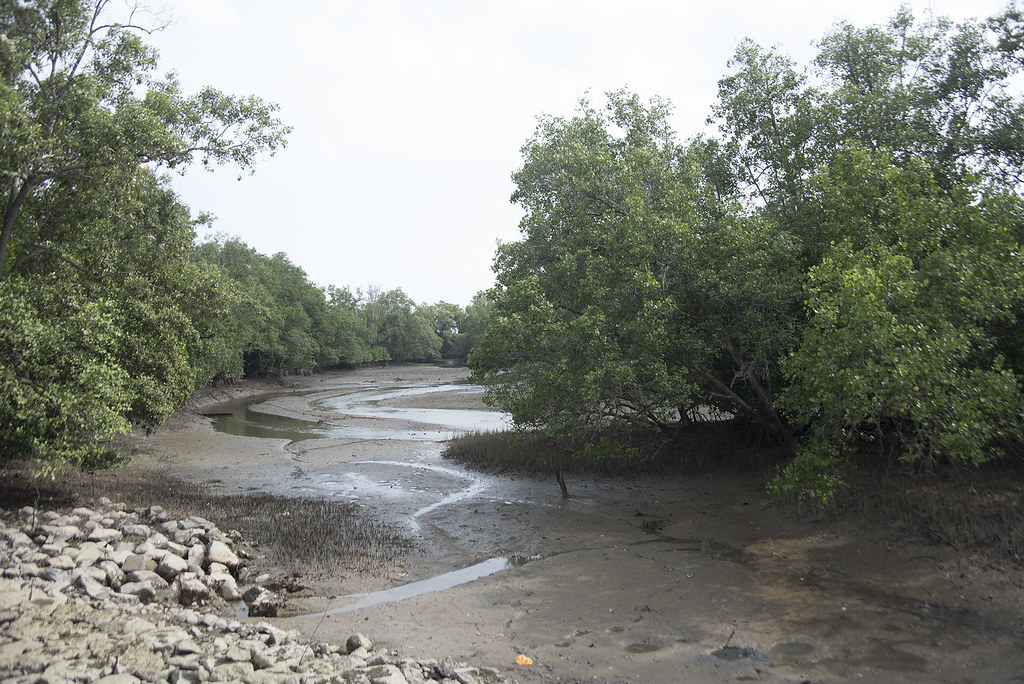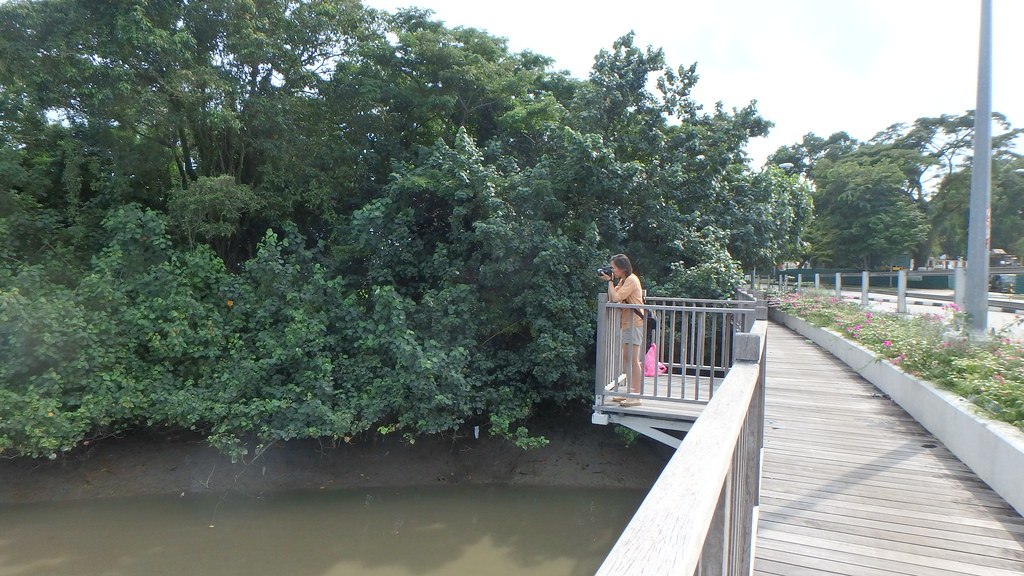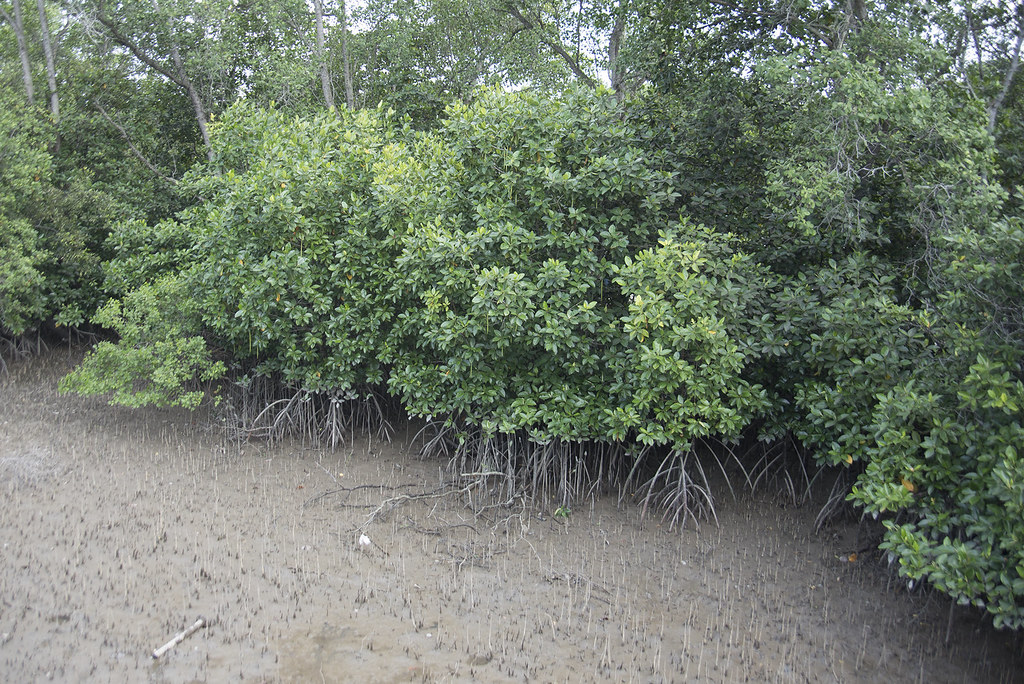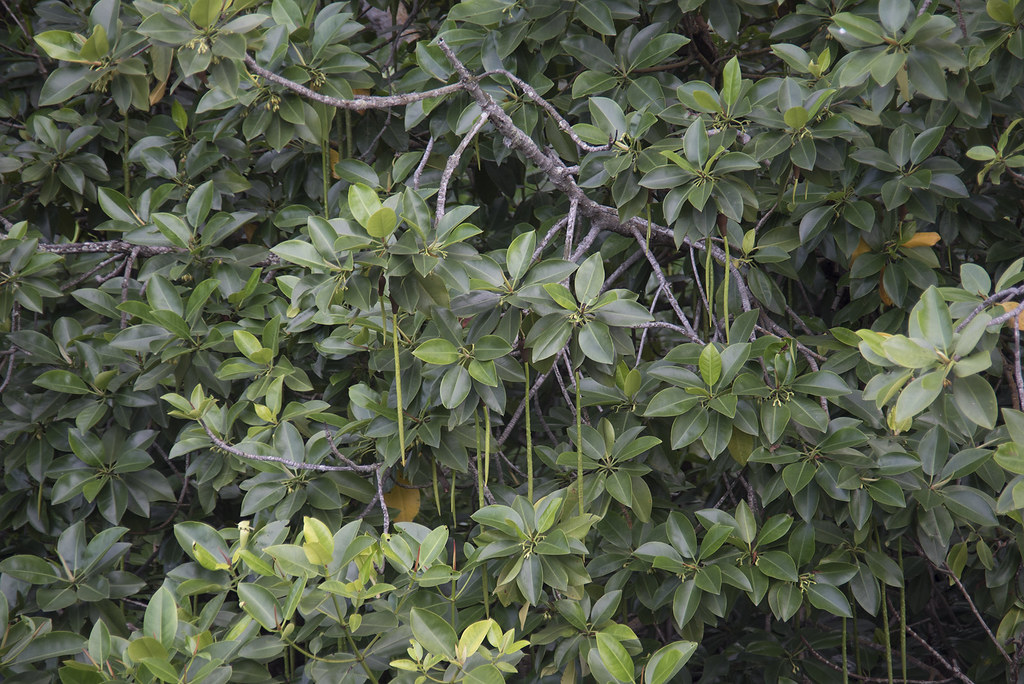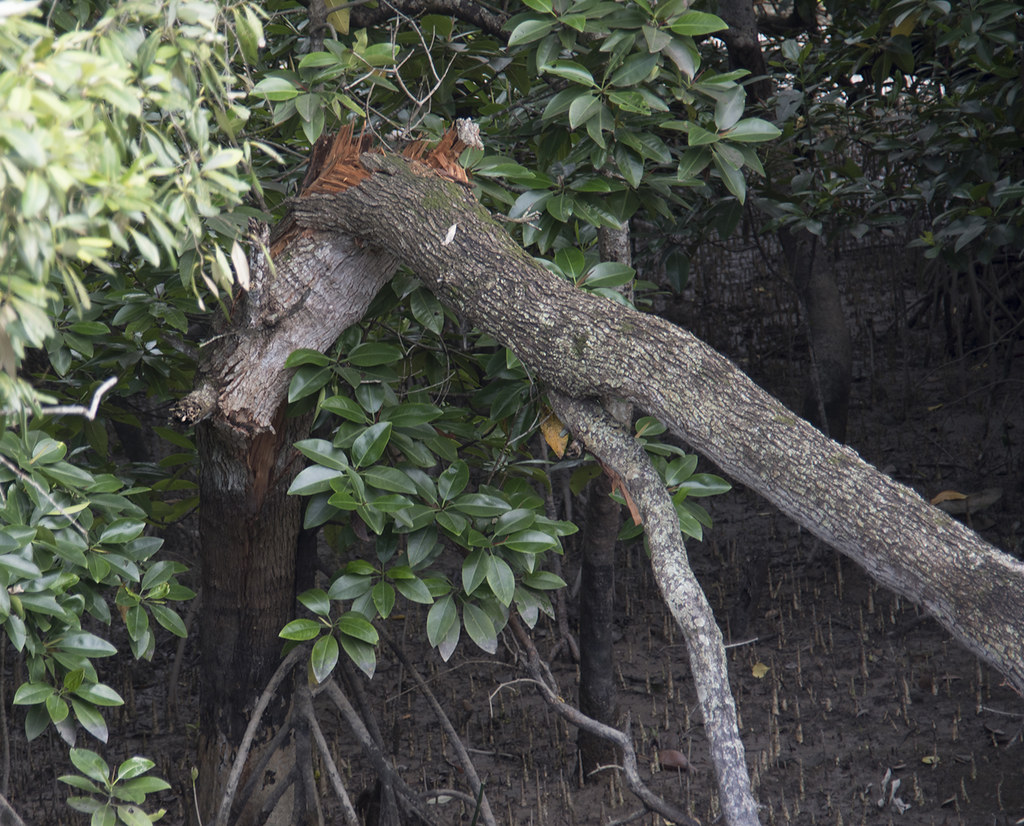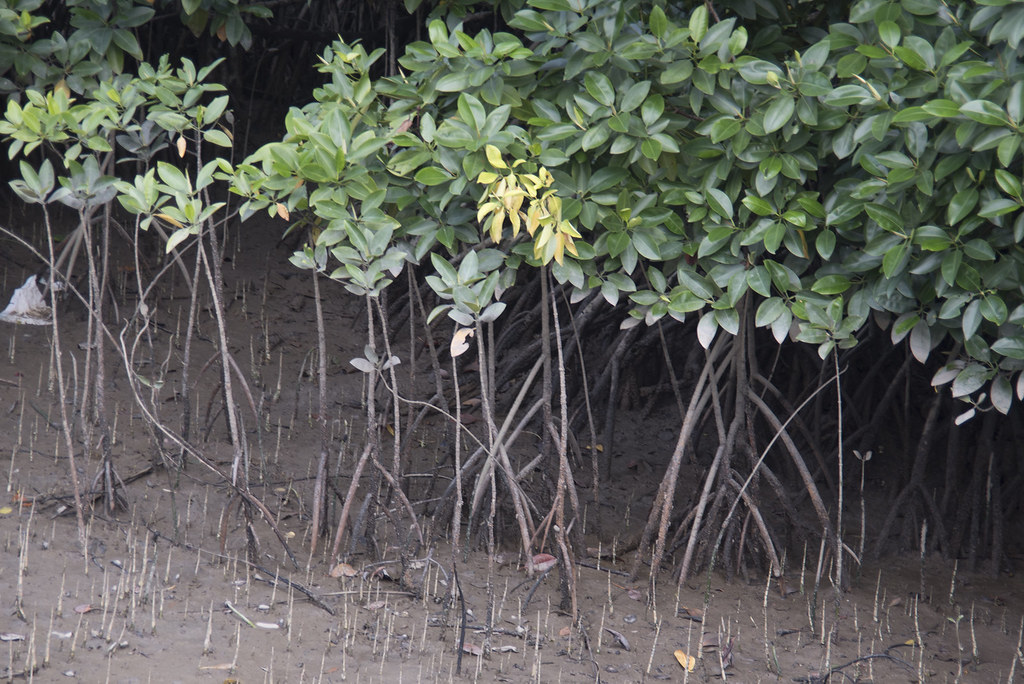There is some improvement compared to our last oil spill impact survey in Jan 2017, about two weeks after the oil spill. I could no longer clearly see the narrow band of oil stains on the mangrove trees. But it was alarming to see one large mangrove tree had snapped at the trunk.
The last patch of wild mangroves at Changi are upstream of Changi Creek.
Debby and I had a quick look at the Changi Creek mangroves by walking along the boardwalk next to the road.
Most of the trees looked alright, with nice green leaves.
I didn't see any mangrove propagules that were 'albinos', i.e., odd colours other than green.
Dr John Yong has taught us to look at propagules on a mangrove tree for early signs of pollution affecting mangroves. Propagules are the long things that we see hanging on some mangrove trees. These are not fruits but seedlings (thus 'propagating units'=propagules?) that develop on the mother tree. As in humans, these 'baby trees' are more easily affected by bad stuff that might not show up so clearly on a mature tree. Pollution may turn a propagule pink! Or yellow or white. These 'albino' propagules are a first sign of something going wrong in a mangrove. Here's an albino' propagule that I've seen in the past.
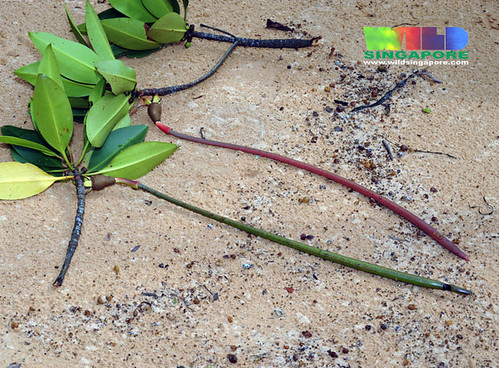
The tree looks like it snapped at the trunk! And there are oil stains on the trunk. Did the oil impact affect the tree's health?
There were still signs of oil stains on the lower leaves of some of the trees.
And one sapling with yellowing leaves.
We saw many Leaf oysters on the mud that looked alive.
And one Giant mudskipper building his 'swimming pool' home to attract a nice girlfriend.
Today, Debby Ng of the Hantu Bloggers and I surveyed these Changi shores for oil spill impact
- Changi Creek near Changi Point Ferry Terminal
- Changi Beach at Carpark 2 and 3
- Changi seagrass meadows near Changi Point Ferry Terminal
Posts about the Jan 2017 Johor Strait oil spill
- Round Ubin survey for oil spill impact and long-term monitoring
- Changi Creek and Sungei Ubin after the oil spill
- Oil spill at East Johor Strait: YOUR sightings part 2
- Changi Creek
- Changi Creek mangroves
- Changi Beach at Carpark 1 and 2
- Changi seagrass meadows near Changi Point Ferry Terminal
- How are Pasir Ris mangroves and seagrass meadows after the oil spill?
- Are we helping or harming when we 'clean' oiled mangroves?
- Oil spill at East Johor Strait: YOUR sightings
- Key happenings: Oil spill at East Johor Strait, Jan 2017
- Survey of oil spill spill impact on Ubin and mainland Singapore, 5 Jan 2017
- Oil spill near Pulau Ubin, 4 Jan 2017

